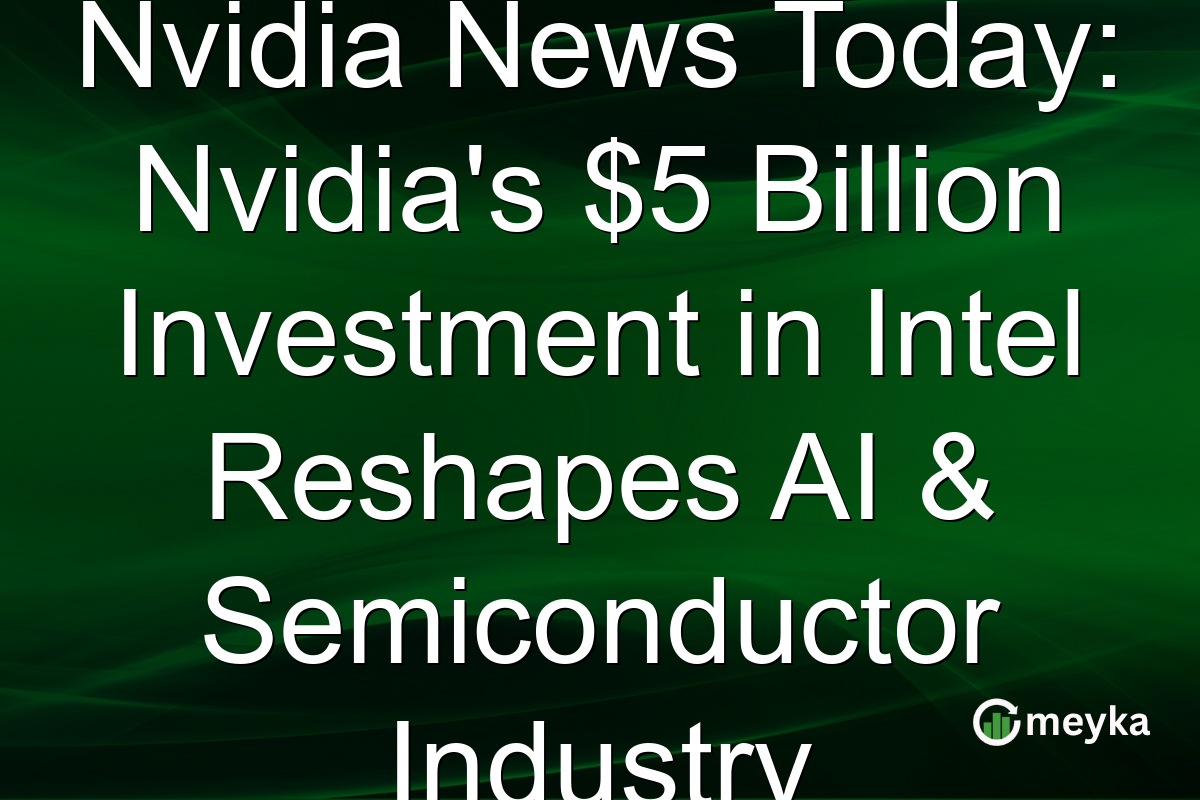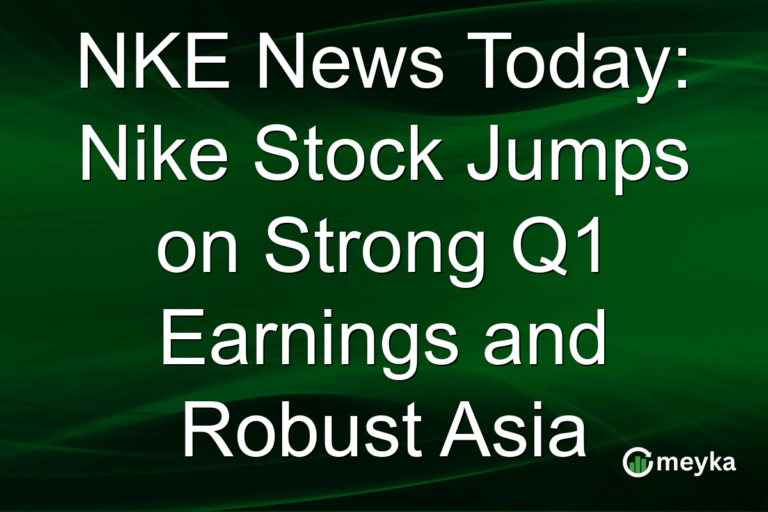Nvidia News Today: Nvidia’s $5 Billion Investment in Intel Reshapes AI & Semiconductor Industry
Nvidia and Intel have announced a groundbreaking partnership, with Nvidia investing $5 billion in Intel to co-develop AI-focused chips. This Nvidia Intel partnership marks a pivotal moment in the tech industry, one that could revolutionize semiconductor manufacturing and applications in artificial intelligence. Nvidia, a leader in graphics and AI technologies, aims to leverage Intel’s manufacturing capabilities, positioning both companies at the forefront of technological advancements.
The Strategic Shift in Semiconductors
The Nvidia invests in Intel signifies a strategic shift in the semiconductor industry. Previously competitors, these giants are joining forces to address the rapid demand for AI chip technology. This partnership leverages Nvidia’s strength in AI and graphics with Intel’s manufacturing prowess. According to Nvidia’s CEO, Jen-Hsun Huang, this collaboration will “accelerate innovation and promote a new era of AI capabilities.” Read more about the strategic implications here. For investors, this could mean enhanced product offerings and greater market dominance.
Impact on NVDA and INTC Stocks
Nvidia’s stock (NVDA) reacted positively to the news, trading at $176.24, up 3.49% recently. The stock is projected with a high price target of $250. Intel (INTC), gaining significant momentum, closed at $30.57, up 22.77% after the announcement. This surge signifies investor confidence in the Nvidia Intel partnership’s potential to enhance long-term growth prospects for both companies. Though Intel has faced challenges with its market performance, this partnership may offer a pathway to regain competitive edge.
AI Chip Collaboration: The Future Outlook
The AI chip collaboration between Nvidia and Intel is set to push boundaries in AI development. With the continual rise in demand for AI-driven applications, this partnership can potentially deliver cutting-edge technologies in areas like autonomous driving and data centers. For Nvidia, this means expanding its AI expertise into new markets, leveraging Intel’s expansive manufacturing infrastructure to scale rapidly. Analysts believe that the combined resources and expertise will “drive accelerated results and performance enhancements across various sectors.”
Adapting to Changing Market Dynamics
For the semiconductor industry, this collaboration could alter market dynamics significantly. By consolidating resources, Nvidia and Intel can mitigate the risk of supply chain disruptions and develop more robust solutions for AI challenges. This adaptability may lead to larger market shares and increased profitability. Investors should watch closely how other companies in the sector respond to this move, as it sets new benchmarks for collaboration. Additional insights and real-time predictions can be accessed through AI platforms like Meyka, positioning itself as a reliable source for future financial trends.
Final Thoughts
In conclusion, Nvidia’s $5 billion investment in Intel highlights a strategic pivot with far-reaching implications for the AI and semiconductor industries. This partnership promises innovative advancements and positions both companies as leaders in AI chip technology. With Nvidia and Intel combining their strengths, investors should expect significant growth opportunities in the AI sector, enhancing their portfolios. For those keeping a close eye on market trends, platforms such as Meyka offer invaluable insights and predictive analytics to navigate these changes effectively.
FAQs
Nvidia’s investment in Intel signifies a major shift towards collaborative innovation in the semiconductor industry, potentially leading to breakthroughs in AI chip technology and production.
Nvidia’s stock shows upward momentum, trading at $176.24, while Intel recently closed at $30.57. Both stocks reflect investor confidence in their strategic partnership’s potential growth opportunities.
Nvidia and Intel are leveraging each other’s strengths: Nvidia’s AI expertise and Intel’s manufacturing capabilities. This collaboration aims to meet growing demand and drive innovation in AI applications.
While promising, risks include market competition, integration challenges, and technological development hurdles. However, enhanced resources may mitigate these risks.
Investors might see growth in stock values as the partnership improves AI technology and expands market share, offering potential for higher returns in the long term.
Disclaimer:
This is for information only, not financial advice. Always do your research.






